From Henk Janse to Robert J. Vance
I had the book “Kick-start and snap flies” (original Dutch title “Aantrappen en vliegen happen”, written by Art de Vos) in hands because I was looking for the page in it with MFN member and Harley-Davidson lover Henk Janse. Therefore I browsed through it from start to end, and found a picture that did ring a bell in my mind. It concerns an American soldier on, by chance, an Harley-Davidson. As I have ordered my collection in such a way that it follows the story telling through my exposition, I grabbed the album about the motorcycle in the army. And yes, there were the stamp and the envelop.
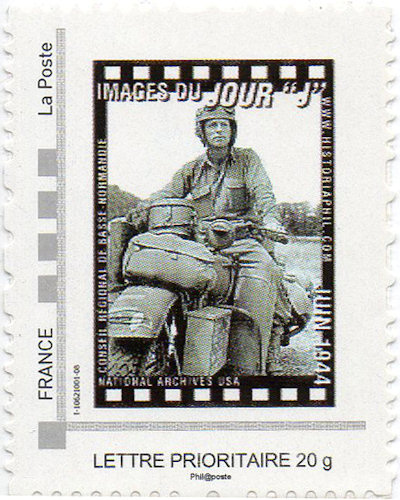
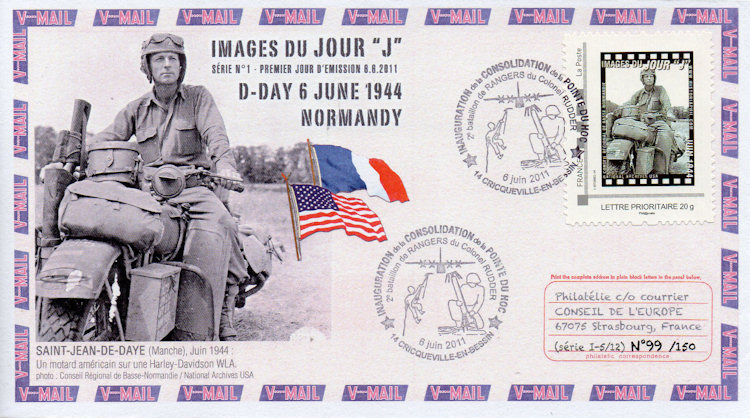
It is a private issue on the occasion of the 67th anniversary of D-Day. The stamp and FDC have been announced in Newsletter 98, and have been issued in June 2011 in a series of 2, as booklet and FDC.
In the book
“Kick-start and snap flies” it is told that it concerns private Robert J. Vance on his H-D Liberator. Some research on the internet does not learn much more. Known is that private Vance has landed on D-Day in Normandy as orderly of the 33rd Armored regiment of the 3rd Armored division.
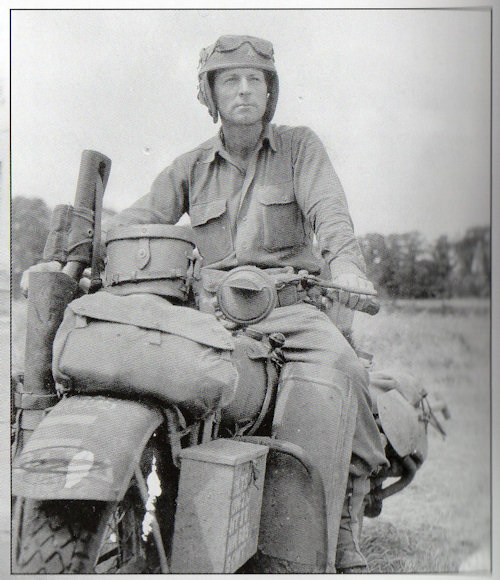
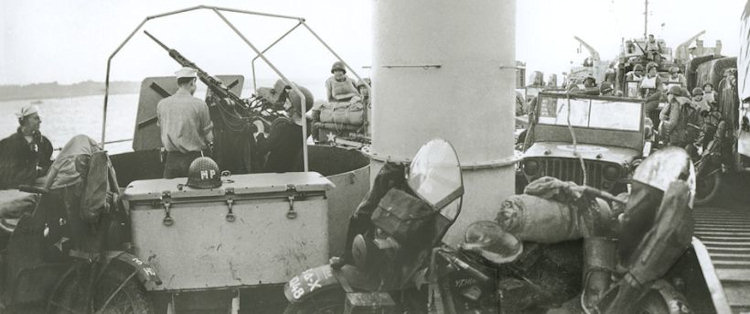
Although the army censor has removed all identification marks, it is vaguely visible on the front mudguard that it concerns the 22nd motorcycle of HQ (headquarters): HQ22. On the ammunition box next to the front wheel there are a few other recognisable data.
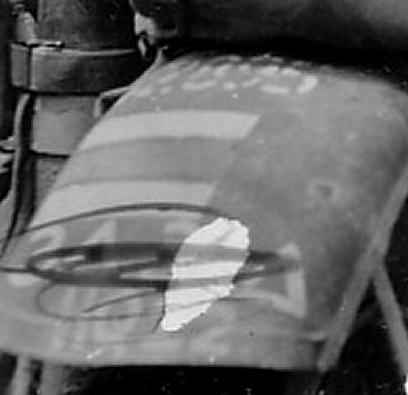
The low positioned ammunition box indicates that it concerns a type IV or early V 42 WLA. WLA stands for:
- W – 45 cubic inch
- L – high compression
- A – Army, although some say this A stands for America, because the C of the WLC indicates Canada.
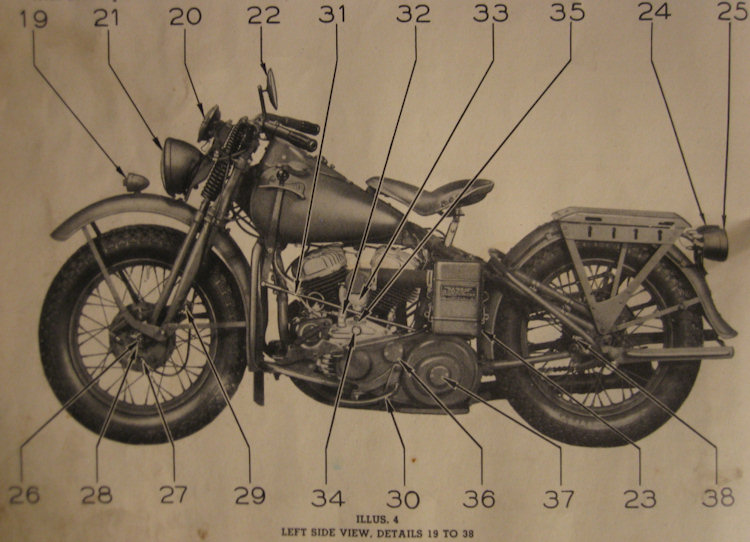
Image from the manual of the HD-WLA
The leg shields are optional and are most times not mounted on the motorcycle, thus the motorcycle of private Vance is an exception. Along the tank we see the M1 carbine with which orderlies were sent out.
The picture has been taken at the end of June, when the Allied Powers already had advanced somewhat in France and the orderlies transported the messages between the officers in command and the scouts at the front, and from the officers in command to the coast, from where they were transferred to England. Over there the messages were transferred to London, where the Higher Command was located, by Despatch Riders, often women.
Nico Helling
Top - Back to former page - Home |





